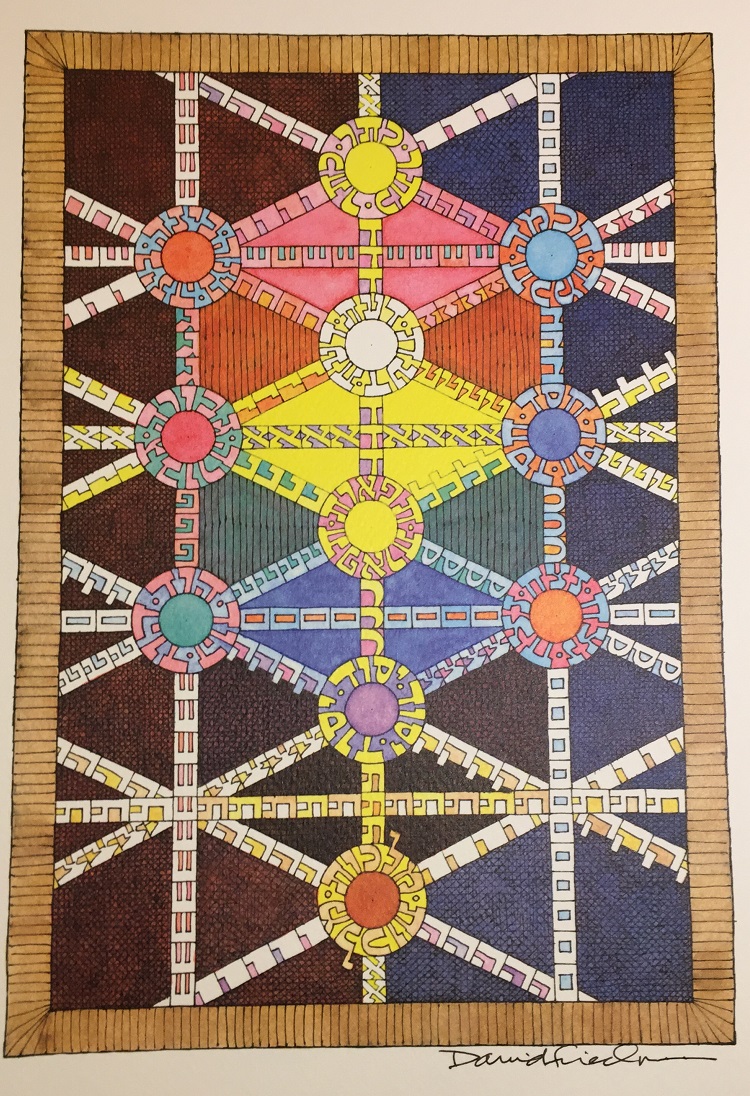
The best-known and most important of the “streams” of Kabbalah is called, by scholars, “theosophical” Kabbalah. Theosophical means having to do with knowledge, or wisdom, about the Divine, and so theosophical Kabbalah explains, in great detail, the nature of the Godhead, the relationship of the Infinite to the Finite, and how this world came into being.
(Incidentally, the word “theosophical” was used by a group of 19th and 20th century mystics, including W.B. Yeats, to describe their quest, but had a different meaning in that context. Here, it is meant only generally, as having to do with knowledge of the Divine.)
As we’ve already said (see “The meaning of “God”), Kabbalists have a very different, and often surprising, idea of “God” from what we normally do. In fact, the concept of “God” (Elohim) is a concept that evolves, over time, from the Infinite — what we think of as “God” is only one face of the ein sof, the Infinite. So, as you read through this introduction to theosophical Kabbalah, you may find yourself thinking “This is not the God I learned about in Sunday school” or “This is not the God I hear people talking about on television.” Good — that is a sign that you’re understanding.
The fundamental task of theosophical Kabbalah is to explain the structure of the universe, especially how the universe can exist at all if God is truly infinite. Think about it: if God is infinite, as our Cordovero source said above, then why are there computers, desks, people, trees, and sky? Why does the world appear to be a place of separate objects, thrown together by chance, and hardly “filled with Divine light”?
Moreover, theosophical Kabbalah became systematized in part in response to rationalist philosophy, which tried to understand with greater clarity what “God” is. To take but one example, if God is perfect, that means God cannot change, because a change implies a movement from one set of attributes (A, B, C, D) to another (A, B, C, X). Both of those sets cannot be perfect, and so, therefore, God cannot change. But if God cannot change, how can God “create” the universe? How does one explain the Biblical passages in which God does appear to change from, say, angry to forgiving?
Philosophers, chiefly Rabbi Moshe ben Maimon (Maimonides) did come up with answers to these questions. But the Kabbalists came up with very different ones. They said, in a series of books leading up and including to the Zohar, that the Infinite light — using metaphor here — shines through an array of prisms, which color the light and give apparent form to the formless. These prisms are called sefirot, and the sefirot function as vessels of Divine energy present in all of creation, including in us. God manifests godself through the sefirot, and so the world appears as it does.
Not simple, not yet clear — but stay with it, as we’ll explore some texts and teachings which fill in the picture.
The critical error all of us make, because of how human nature is designed, is that we suppose that form is separate and real. We think tables and chairs are real and separate, and, most importantly, we think that we are, too. And since I am separate from you, and since my happiness is what matters, I develop all kinds of complicated mechanisms to somehow keep myself happy, even if it occasionally is at your expense. I know that I should act in all sorts of moral and healthy ways, but I don’t, because I want stuff, money, happiness, love — I’ll even act against my own long-term interests to get them.
Really, what is conceived of as “I” is a culturally contingent illusion of the well-functioning brain. In theistic terms, “I” am, as the Kabbalah-influenced Madonna said, actually a ray of light. And my separation from the source of light exists only on one plane of perception. But it doesn’t feel that way, and so I act in ways which actually enhance the perception of separation (e.g., building walls around my emotions) in order, I think, to survive.
Yet for theosophical Kabbalah, the structures of the “I” are not random but reflect the structure of the macrocosm itself. The best-known of these is that of the sefirot, which we will talk about next.